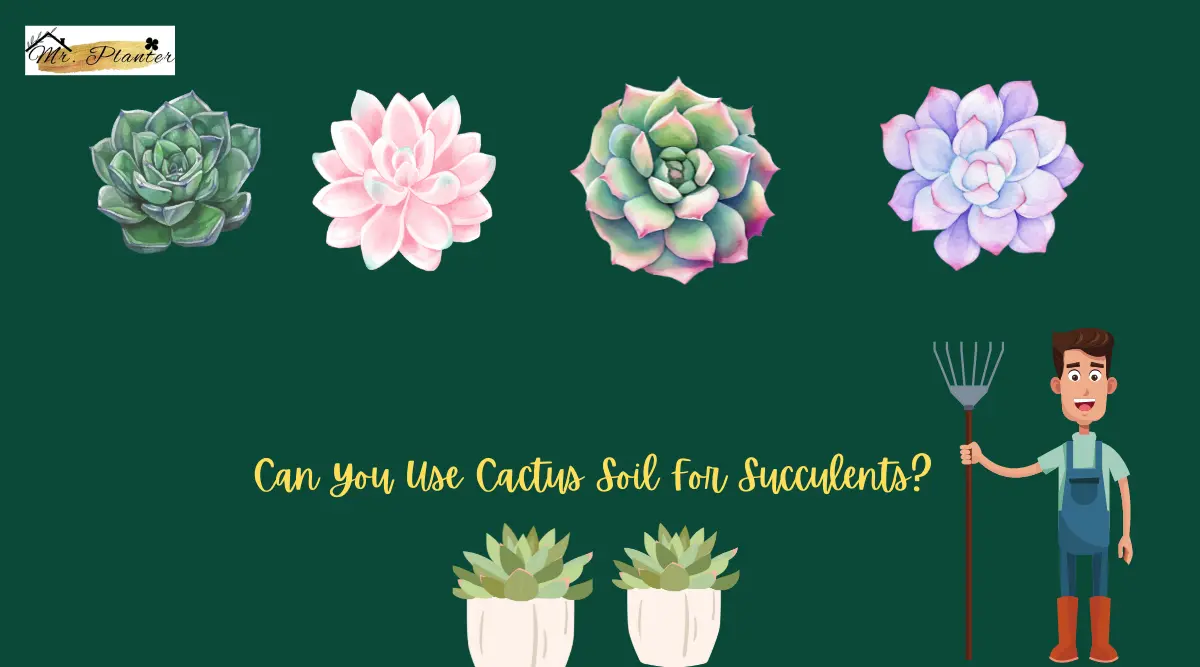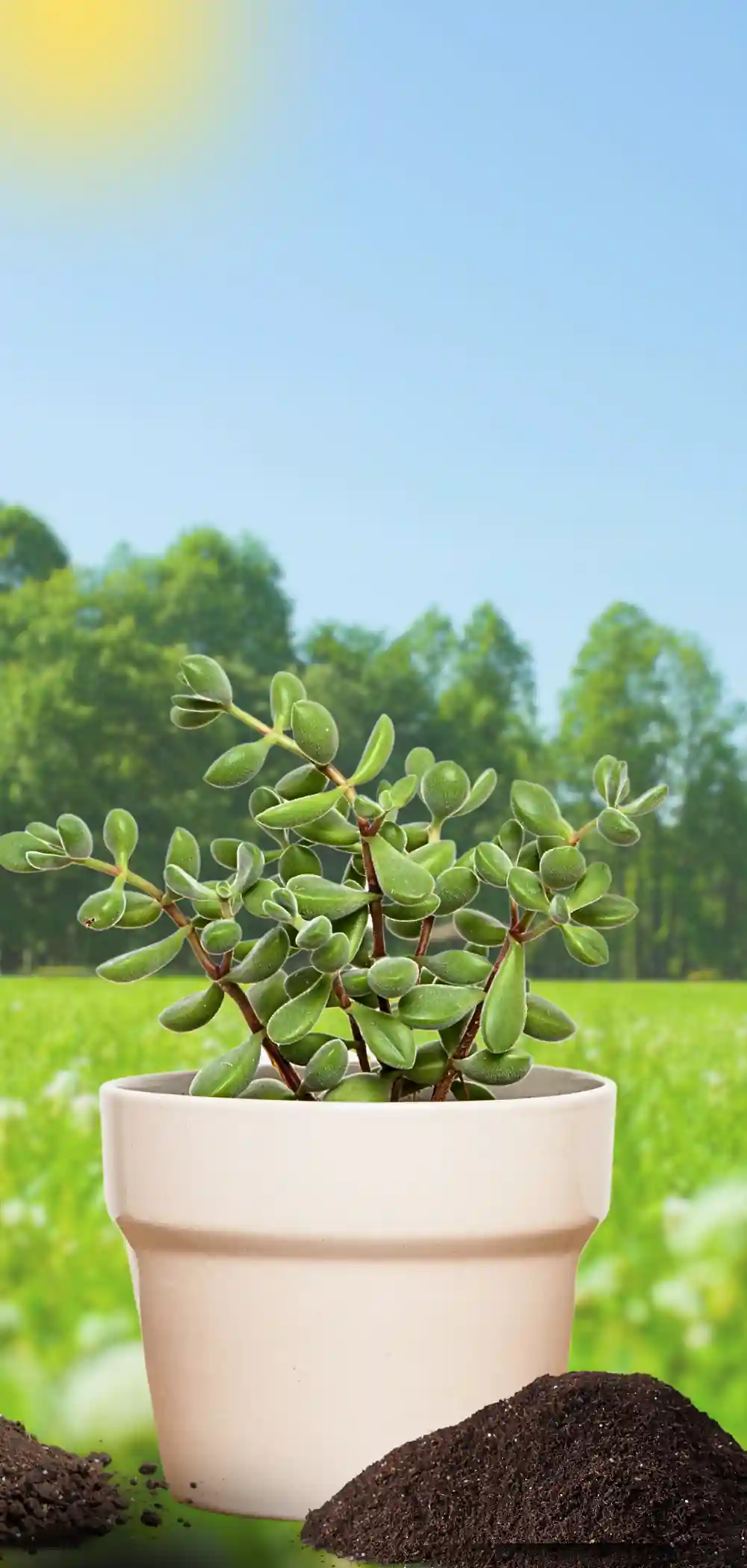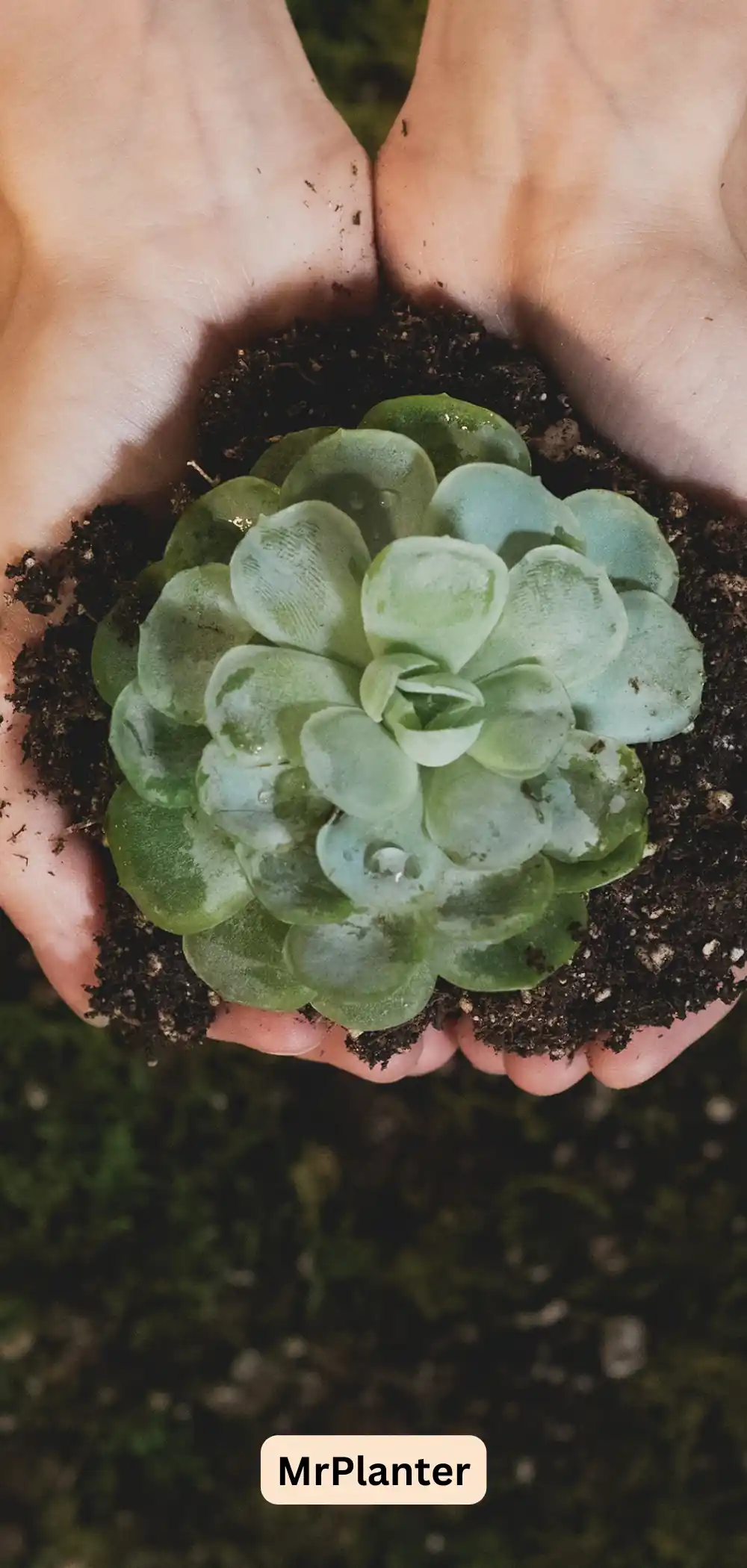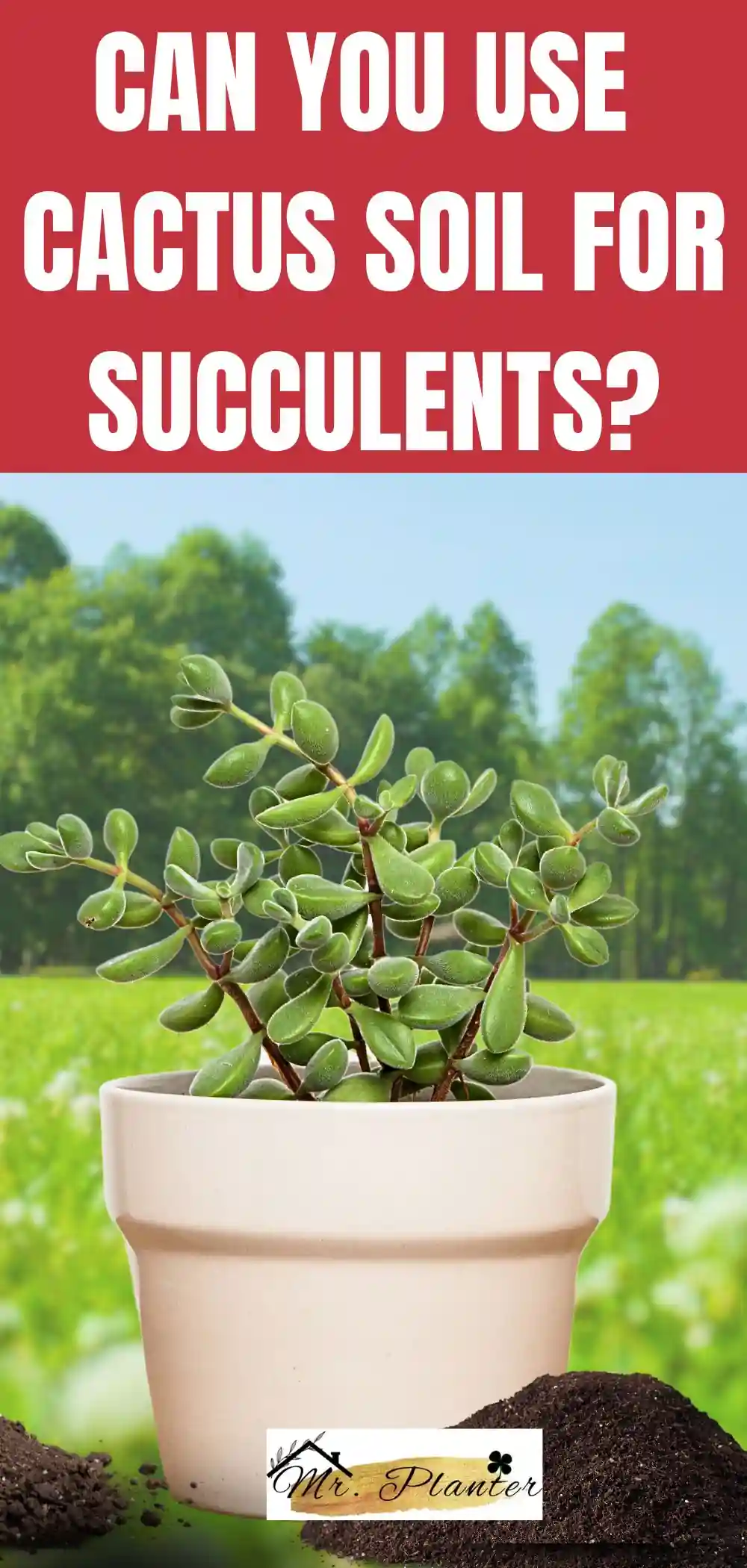If you’re a succulent lover, you know that choosing the right soil mix is crucial for the health and growth of your plants.
While there are countless soil mixes available on the market, you may be wondering whether cactus soil is a suitable option for your succulents. The short answer is yes, but there are a few things to consider before making the switch.
Succulents are known for their ability to store water in their leaves, stems, and roots, allowing them to survive in arid conditions. As a result, they need a soil mix that promotes good drainage and prevents water from pooling around their roots.
Cactus soil is a popular choice for succulent enthusiasts because it is designed to provide excellent drainage, which helps prevent root rot and other moisture-related issues.

However, it’s important to understand that cactus soil is not a one-size-fits-all solution for succulents, and there are certain factors to keep in mind when using it.
Key Takeaways
- Cactus soil can be a suitable option for succulents, but it’s important to understand their unique needs before making the switch.
- Cactus soil promotes good drainage, which is crucial for preventing root rot and other moisture-related issues.
- While cactus soil can be a good choice for succulents, it’s important to use it in conjunction with other soil mixes and to repot your plants regularly to ensure their continued health and growth.
Can You Use Cactus Soil For Succulents?
Yes, cactus soil can be used for succulents. However, it is important to ensure that the soil is well-draining and does not retain too much moisture.
Succulents are plants that store water in their leaves, stems, and roots, which allows them to survive in arid environments.
Cacti are a type of succulent, but not all succulents are cacti. Both cacti and other succulents require well-draining soil that does not retain too much moisture.
This is because their natural habitats are often dry and arid, and they are adapted to survive in such conditions. If the soil retains too much moisture, it can lead to root rot, which can be fatal to the plant.

Cactus soil is a good option for succulents because it is specifically formulated to be well-draining and to provide the right balance of nutrients for these types of plants.
It is typically made up of a mix of sand, perlite, and peat moss, which allows for good drainage and aeration.
However, it is important to note that not all cactus soils are created equal, and some may be too heavy or retain too much moisture.
It is always a good idea to check the ingredients and make sure that the soil is appropriate for the specific type of succulent you are growing.
In addition to using the right soil, it is also important to make sure that succulents are planted in a container with good drainage. This can help prevent water from pooling at the bottom of the pot and causing root rot.
It is also important to water succulents properly, allowing the soil to dry out completely between waterings. Overwatering is one of the most common causes of succulent death, so it is important to be mindful of how much water your plants are receiving.
Understanding the Needs of Succulents
Succulents are plants that have adapted to survive in dry environments by storing water in their leaves, stems, and roots.
They come in a variety of shapes and sizes, but they all share the same need for well-draining soil. In this section, we will explore how succulents adapt to dry environments and what kind of soil they need to thrive.
How Succulents Adapt to Dry Environments
Succulents have evolved to survive in environments where water is scarce. They have developed a number of adaptations that allow them to store water and survive long periods of drought.
Some of these adaptations include:
- Thick, fleshy leaves and stems that can store water
- A waxy coating on their leaves that reduces water loss
- A shallow root system that allows them to quickly absorb water when it is available
What Kind of Soil Do Succulents Need to Thrive
The key to growing healthy succulents is to provide them with soil that drains well and does not retain too much water. Succulents are susceptible to root rot, which can occur if they are planted in soil that is too moist.
Here are some characteristics of soil that is ideal for succulents:
- Porous and well-draining
- Low in organic matter
- High in sand and perlite or pumice
- Slightly acidic

When planting succulents, it is important to choose a pot with drainage holes to ensure that excess water can escape. You can also add a layer of gravel or sand at the bottom of the pot to improve drainage.
Exploring Cactus Soil
If you’re new to succulent gardening, you may have heard that cactus soil is a good choice for growing succulents.
But what exactly is cactus soil, and why is it a good choice for succulents?
What is Cactus Soil?
Cactus soil is a type of soil that is specifically formulated to meet the needs of cacti and other succulents. It is a well-draining soil that allows water to flow through quickly, preventing the roots from becoming waterlogged and rotting.
Cactus soil is also designed to provide good aeration, which is important for succulents because they need plenty of oxygen around their roots.
Components of Cactus Soil
Cactus soil is typically made up of a few key components:
- Sand: Sand is a common component of cactus soil because it helps to improve drainage. However, it’s important to use coarse sand rather than fine sand, as fine sand can actually make the soil too dense and prevent drainage.
- Perlite: Perlite is a lightweight, porous material that helps to improve aeration in the soil. It also helps to prevent the soil from becoming too compacted.
- Pumice: Pumice is another lightweight, porous material that is often used in cactus soil. It helps to improve drainage and aeration, and also provides some added minerals to the soil.
- Organic matter: While cacti and succulents don’t need a lot of organic matter in their soil, a small amount can be beneficial. Organic matter can help to hold onto moisture and nutrients, which can be especially helpful in dry climates.
- Peat: Peat is a common component of many types of potting soil, but it’s not always the best choice for cactus soil. Peat can hold onto too much moisture, which can be detrimental to succulents.
- Coarse sand: As mentioned earlier, coarse sand can be a good component of cactus soil. However, it’s important to make sure that it’s not too fine, as this can actually make the soil too dense.
- Clay: Clay is not typically used in cactus soil, as it can hold onto too much moisture and prevent proper drainage.
Overall, cactus soil is a good choice for succulents because it provides the right balance of drainage and aeration. By using the right components, you can create a soil that will help your succulents thrive.
Compatibility of Cactus Soil for Succulents
If you are wondering whether you can use cactus soil for your succulents, the answer is yes, to some extent.
However, it is important to understand the compatibility of cactus soil for succulents to ensure optimal growth and health of your plants.
Similarities Between Succulent and Cactus Soil Needs
Succulents and cacti have similar needs when it comes to soil. They both require well-draining soil to prevent water from accumulating around the roots, which can lead to root rot.
Cactus soil is typically a well-draining soil mixture made up of materials such as sand, perlite, vermiculite, and sometimes peat moss or coir. These materials help to provide good aeration and drainage, which are essential for both cacti and succulents to thrive.
Potential Issues with Cactus Soil for Certain Succulents
While cactus soil can be a good option for most succulents, some succulent species may not be compatible with this type of soil. Some succulents prefer a soil mix that is richer in organic matter, which can help retain moisture.
If you have succulents that prefer a more moisture-retentive soil, cactus soil may not be the best option for them.
Another potential issue with using cactus soil for succulents is soil compaction. Over time, cactus soil can become compacted, which can hinder water drainage and airflow around the roots.
This can lead to root rot and other issues. To prevent soil compaction, it is important to mix in fresh soil or other amendments periodically to keep the soil loose and well-draining.
How to Test and Adjust the pH Level of Cactus Soil?
The pH level of your soil is an important factor in the growth and health of your plants. Most succulents and cacti prefer soil with a slightly acidic to neutral pH level of around 6.0 to 7.0.
To test the pH level of your cactus soil, you can use a soil pH meter or a DIY soil pH test kit.
If your cactus soil is too alkaline, you can adjust the pH level by adding acidic amendments such as peat moss, sulfur, or pine needles. On the other hand, if your soil is too acidic, you can add alkaline amendments such as limestone or wood ash.
Overall, cactus soil can be a good option for most succulents, as long as you are aware of the potential issues and take steps to prevent them. By using well-draining soil, monitoring soil compaction, and testing and adjusting the pH level of your soil, you can help ensure optimal growth and health of your succulents.
Pros and Cons of Using Cactus Soil for Succulents
When it comes to planting succulents, the type of soil you use is crucial to their health and growth. While some gardeners swear by cactus soil for succulents, others prefer to use a different type of soil. In this section, we will discuss the pros and cons of using cactus soil for succulents, so you can make an informed decision about what type of soil to use for your plants.
Advantages of Using Cactus Soil
One of the main advantages of using cactus soil for succulents is its excellent drainage. Cactus soil is specifically designed to allow water to flow through it quickly, which is essential for preventing root rot in succulents.
This means that your succulents will be less likely to suffer from overwatering, which is a common problem in plants that require well-draining soil.
Another advantage of using cactus soil for succulents is its low water retention. Succulents are adapted to survive in dry environments, so they require soil that does not hold onto water for too long.
Cactus soil is ideal for this purpose because it is made up of coarse sand, perlite, and other materials that allow for good aeration and fast drainage.
Drawbacks of Using Cactus Soil
While cactus soil has many advantages, it also has some drawbacks that you should be aware of before using it for your succulents.
One of the main drawbacks is that it can be too dry for some succulent species. If you have succulents that require more moisture, such as certain types of Echeveria or Aloe, cactus soil may not be the best choice for them.
Another drawback of using cactus soil for succulents is that it can be too alkaline for some plants. Cactus soil is often formulated with a high pH level, which can be harmful to certain succulent species that prefer a more acidic soil.
If you have succulents that require a lower pH level, such as certain types of Haworthia or Gasteria, you may want to consider using a different type of soil.
So, while cactus soil can be a good choice for many succulent species, it is not always the best option.
It is important to consider the specific needs of your succulents before deciding on what type of soil to use.
If you decide to use cactus soil, make sure to monitor your plants closely and adjust your watering schedule accordingly to ensure their health and growth.
Best Practices for Using Cactus Soil with Succulents
If you’re planning to use cactus soil for your succulents, there are certain best practices you should follow to ensure optimal growth and health. Here are some key tips to keep in mind:
Mixing Cactus Soil for Improved Suitability
While cactus soil is already well-draining and porous, you can still improve its suitability for succulents by mixing it with other materials. One popular option is to add perlite, which can help increase drainage and prevent soil compaction. Aim for a ratio of 1:1 cactus soil to perlite for best results.
Another option is to mix cactus soil with sand, which can also improve drainage and provide a more natural growing environment for your succulents. However, be sure to use coarse sand rather than fine sand, as the latter can actually hinder drainage and cause soil compaction.
Monitoring Watering Routines
One of the most important aspects of using cactus soil with succulents is to be mindful of your watering routines.
While succulents are drought-tolerant and don’t need to be watered frequently, it’s still important to provide them with enough moisture to thrive.
When using cactus soil, be sure to water your succulents thoroughly but infrequently. Aim to water deeply enough that the water reaches the roots, but avoid watering too often, as this can lead to overwatering and root rot. As a general rule, wait until the soil is completely dry before watering again.
By following these best practices when using cactus soil with succulents, you can help ensure optimal growth and health for your plants.
Alternative Soil Mixes for Succulents
If you’re wondering whether you can use cactus soil for succulents, the answer is yes, you can. But there are also other soil mixes that work well for succulents. Here are some alternative soil mixes you can use for your succulents:
Comparing Different Types of Soil Mixes for Succulents
When it comes to soil mixes for succulents, there are a few different options you can choose from. Here’s a comparison of some of the most common types of soil mixes for succulents:
| Soil Mix | Description | Pros | Cons |
|---|---|---|---|
| Cactus Soil | A mix of sand, perlite, and peat moss | Good drainage | Can be too dry for some succulents |
| Perlite and Pumice | A mix of perlite and/or pumice | Excellent drainage | Can be too porous for some succulents |
| Organic Matter | A mix of organic matter and sand or perlite | Provides nutrients | Can retain too much moisture |
| Coarse Sand | Sand with large particles | Good drainage | Can be too dense for some succulents |
Is Garden Soil Suitable for Growing Succulents?
Garden soil must be carefully considered before planting succulents in it. While succulents can grow in garden soil, it is not always the ideal choice. Succulents prefer well-draining soil to avoid root rot, and garden soil may retain too much moisture. Therefore, it is advisable to amend the garden soil with materials like perlite or sand to improve drainage before planting succulents in garden soil.
DIY Succulent Soil Mix Recipes
If you prefer to make your own soil mix for your succulents, here are some recipes you can try:
- 1 part coarse sand, 1 part perlite, and 1 part regular potting soil
- 2 parts coarse sand, 1 part perlite, and 1 part coco coir
- 1 part grit, 1 part perlite, and 1 part organic matter
Remember, the key to a good succulent soil mix is good drainage and aeration. Avoid using soils that retain too much moisture, as this can lead to root rot. Also, keep in mind that different succulents have different soil preferences, so it’s always a good idea to research the specific needs of your succulent before choosing a soil mix.
Overall, whether you choose to use cactus soil or another soil mix for your succulents, make sure it is well-draining and suitable for indoor or outdoor use, depending on where you plan to keep your succulents. With the right soil mix, your succulents will thrive and grow beautifully.
Repotting Succulents Safely and Effectively
If you want your succulents to thrive, it’s important to repot them from time to time. Repotting can help your succulents grow bigger, healthier, and more beautiful. In this section, we’ll cover the signs that indicate it’s time to repot your succulents and the steps to repot them safely and effectively.
Signs It’s Time to Repot
There are a few signs that indicate it’s time to repot your succulents. If you notice any of these signs, it’s time to give your succulents a new home:
- The roots are growing out of the drainage holes in the bottom of the container.
- The soil is compacted and doesn’t drain well.
- The plant is top-heavy and falls over easily.
- The plant has stopped growing or looks unhealthy.
Steps to Repot Succulents
Here are the steps to repot your succulents safely and effectively:
- Choose a slightly roomier, well-draining pot for your succulent. Repotting is all about giving your succulent an upgrade so it has plenty of room to stretch and grow its roots. Your new pot doesn’t have to be massive, but it should look wider and deeper than your succulent’s current planter.
- Remove the succulent from its current container. Gently loosen the soil around the roots and lift the succulent out of the container. Be careful not to damage the roots or break the stem.
- Remove any dead or damaged roots. Use a clean, sharp pair of scissors or pruning shears to trim away any dead or damaged roots. This will encourage healthy new growth.
- Add a layer of rocks, pebbles, or vermiculite to the bottom of the new container. This will help improve drainage and prevent the roots from sitting in water.
- Add a layer of succulent soil to the new container. You can find succulent soil at most garden centers, or you can make your own by mixing equal parts of sand, perlite, and peat moss.
- Add any soil amendments you want to use. Succulents thrive in arid conditions, so adding amendments like manure, humus, or compost can help improve the soil’s organic content and moisture retention.
- Plant the succulent in the new container. Gently place the succulent in the new container and fill in the gaps with soil. Be sure not to bury the stem too deeply.
- Add a layer of mulch. A layer of mulch can help retain moisture and regulate the temperature around the roots. You can use sphagnum moss, akadama, or granite as a mulch.
- Water the succulent sparingly. Succulents don’t need a lot of water, so be sure not to overwater them. Water sparingly and let the soil dry out between waterings.
- Sterilize your tools. Before you put away your scissors or pruning shears, be sure to sterilize them with rubbing alcohol or a bleach solution. This will help prevent any pest manifestation or disease from spreading to your other plants.
If you liked this post, you can save this Pin.

Frequently Asked Questions
Is cactus soil good for succulents?
Cactus soil is good for succulents because it is well-draining and helps prevent root rot. Succulents, like cacti, need a soil mix that allows water to drain quickly, and cactus soil is designed to do just that. However, it is important to note that not all cactus soil mixes are the same. Some may contain too much sand or not enough organic matter, so it is important to choose a high-quality cactus soil that is specifically formulated for succulents.
What is the difference between cactus soil and succulent soil?
Cactus soil and succulent soil are similar in that they are both well-draining and designed to prevent root rot. However, cactus soil is typically formulated with more sand and less organic matter than succulent soil. This is because cacti are native to desert environments and require a soil mix that is more sandy and less nutrient-rich. Succulents, on the other hand, can come from a variety of environments and may require a soil mix with more organic matter.
Can I mix sand with cactus soil for succulents?
Yes, you can mix sand with cactus soil for succulents to create a well-draining soil mix. However, it is important to use the right type of sand. Coarse sand, like builder’s sand or horticultural sand, is best for mixing with cactus soil. Avoid using fine sand, like play sand or beach sand, as it can create a soil mix that is too dense and does not drain well.
Is perlite good for succulent soil mix?
Yes, perlite is a good addition to a succulent soil mix because it helps improve drainage and aeration. Perlite is a lightweight, volcanic rock that is heated and expanded to create a porous, lightweight material. When added to a soil mix, perlite helps create air pockets that allow water to drain quickly and roots to breathe. However, it is important to use perlite in moderation, as too much can make the soil mix too porous and cause it to dry out quickly.
